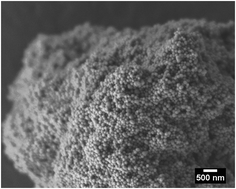In situ static and dynamic light scattering and scanning electron microscopy study on the crystallization of the dense zinc imidazolate framework ZIF-zni†
Abstract
The kinetics and mechanism of

* Corresponding authors
a
Department of Chemistry, University of Paderborn, Warburger Str. 100, 33098 Paderborn, Germany
E-mail:
klaus.huber@upb.de
Fax: +49 5251-60-4208
Tel: +49 5251-60-2125
b
Institute of Inorganic Chemistry, Leibniz University Hanover, Callinstr. 9, 30167 Hanover, Germany
E-mail:
Michael.Wiebcke@acb.uni-hannover.de
Fax: +49 511 762-3006
Tel: +49 511 762-3698
The kinetics and mechanism of

 Please wait while we load your content...
Something went wrong. Try again?
Please wait while we load your content...
Something went wrong. Try again?
T. Hikov, C. A. Schröder, J. Cravillon, M. Wiebcke and K. Huber, Phys. Chem. Chem. Phys., 2012, 14, 511 DOI: 10.1039/C1CP22855B
To request permission to reproduce material from this article, please go to the Copyright Clearance Center request page.
If you are an author contributing to an RSC publication, you do not need to request permission provided correct acknowledgement is given.
If you are the author of this article, you do not need to request permission to reproduce figures and diagrams provided correct acknowledgement is given. If you want to reproduce the whole article in a third-party publication (excluding your thesis/dissertation for which permission is not required) please go to the Copyright Clearance Center request page.
Read more about how to correctly acknowledge RSC content.
 Fetching data from CrossRef.
Fetching data from CrossRef.
This may take some time to load.
Loading related content
